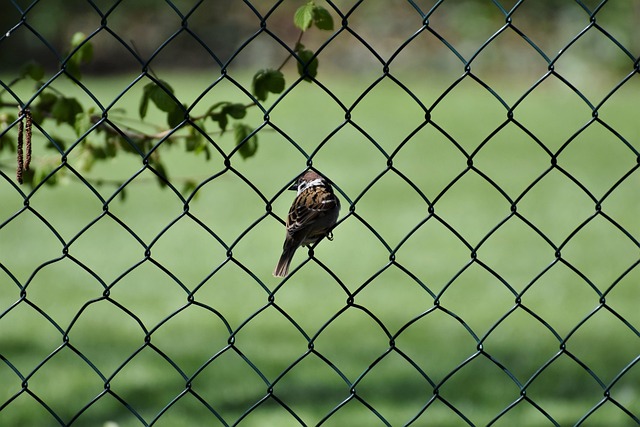DIY Fence Installation Tips for New Bedford, Massachusetts Homeowners
Thinking of installing a fence around your New Bedford property? This comprehensive guide is tailored to help you navigate the DIY process successfully. From understanding your fencing options specific to our region to mastering final touches and maintenance, we’ve broken down each step. Whether you’re planning a wooden, vinyl, or chain-link fence, this article offers invaluable insights to ensure your project aligns with local regulations and enhances your home’s curb appeal. Let’s get started!
- Understanding Your Fence Options for New Bedford Properties
- Measuring and Planning Your Fence Layout Effectively
- Preparing the Ground: A Step-by-Step Guide
- Installing Your Fence: Tools and Techniques for Success
- Final Touches and Maintenance Tips for Longevity
Understanding Your Fence Options for New Bedford Properties
When considering a DIY fence installation, New Bedford homeowners have a variety of options to choose from, each with its own unique advantages and styles. Wood is a popular choice due to its natural aesthetic appeal and affordability. However, it requires regular maintenance to withstand the harsh New England climate. Vinyl fences are low-maintenance alternatives that come in numerous colors and designs, making them suitable for those seeking both functionality and visual appeal. Concrete or masonry fences offer durability and a classic look but can be more expensive and time-consuming to install.
Before beginning your project, research local building codes and regulations related to fence installation. These guidelines will ensure your fence is safe, structurally sound, and compliant with neighborhood standards. Additionally, consider factors like privacy levels needed, the amount of upkeep you’re willing to dedicate, and the overall design that complements your property’s architecture and surrounding landscape.
Measuring and Planning Your Fence Layout Effectively
When planning your DIY fence installation, accurate measuring and strategic layout are key. Begin by assessing the perimeter of your property to determine the total length of fencing required. Use a tape measure or laser distance meter for precise measurements. Consider the placement of gates, posts, and any specific design elements to ensure a functional and aesthetically pleasing result.
Create a detailed plan, including scale drawings, to visualize the fence layout. Decide on the type of fence best suited for your space and needs—wooden, vinyl, or chain-link fences each offer unique advantages. Plan for post placement, ensuring they are securely anchored in the ground to support the fence’s weight and withstand local climate conditions.
Preparing the Ground: A Step-by-Step Guide
Preparing the ground is a crucial step in DIY fence installation, setting the foundation for your new barrier. Start by clearing the area of any debris, plants, or rocks. Use a garden fork or shovel to loosen the soil, especially if it’s compacted. This process ensures better contact between the fence posts and the ground, promoting stability.
Next, measure and mark the perimeter of where you want your fence to stand. Stake out the lines using string or a level. Dig holes for the fence posts, ensuring they are deep enough (at least one-third of the post’s height) to provide secure anchorage. The size of the holes will depend on the type of fence and posts you’re using. Remember, proper preparation ensures a more durable and aesthetically pleasing fence installation.
Installing Your Fence: Tools and Techniques for Success
When it comes to DIY fence installation, having the right tools and understanding basic techniques is key to success. Start by planning your fence layout and measuring the perimeter carefully. Mark out the posts’ locations using stakes and string for a straight line. Dig holes for the posts, ensuring they’re deep enough to provide stability; typically around one-third of the post’s height. Use a level to ensure each post is plumb (straight up and down).
For connecting posts and rails, use suitable hardware like brackets or nails, following manufacturer guidelines. Ensure your tools are sharp and in good condition for clean cuts and precise installations. Regularly double-check your work as you go to catch any errors early on.
Final Touches and Maintenance Tips for Longevity
After completing the fence installation, it’s time to add the final touches and implement maintenance practices that will ensure your new fence lasts for years to come. Start by inspecting the entire length of the fence for any loose or damaged components. Tighten all screws, nails, and brackets using a suitable tool, ensuring everything is secure. Check the posts and rails for levelness, adjusting as needed with shims or spacers.
Regular cleaning and sealing will protect your fence from the elements and maintain its appearance. Use a soft brush to remove any dirt or debris, then apply a pressure washer if necessary. After cleaning, use a high-quality sealant designed for wood fences to shield it from water damage and UV exposure. This simple routine will keep your New Bedford, Massachusetts fence looking fresh and extend its lifespan significantly.
